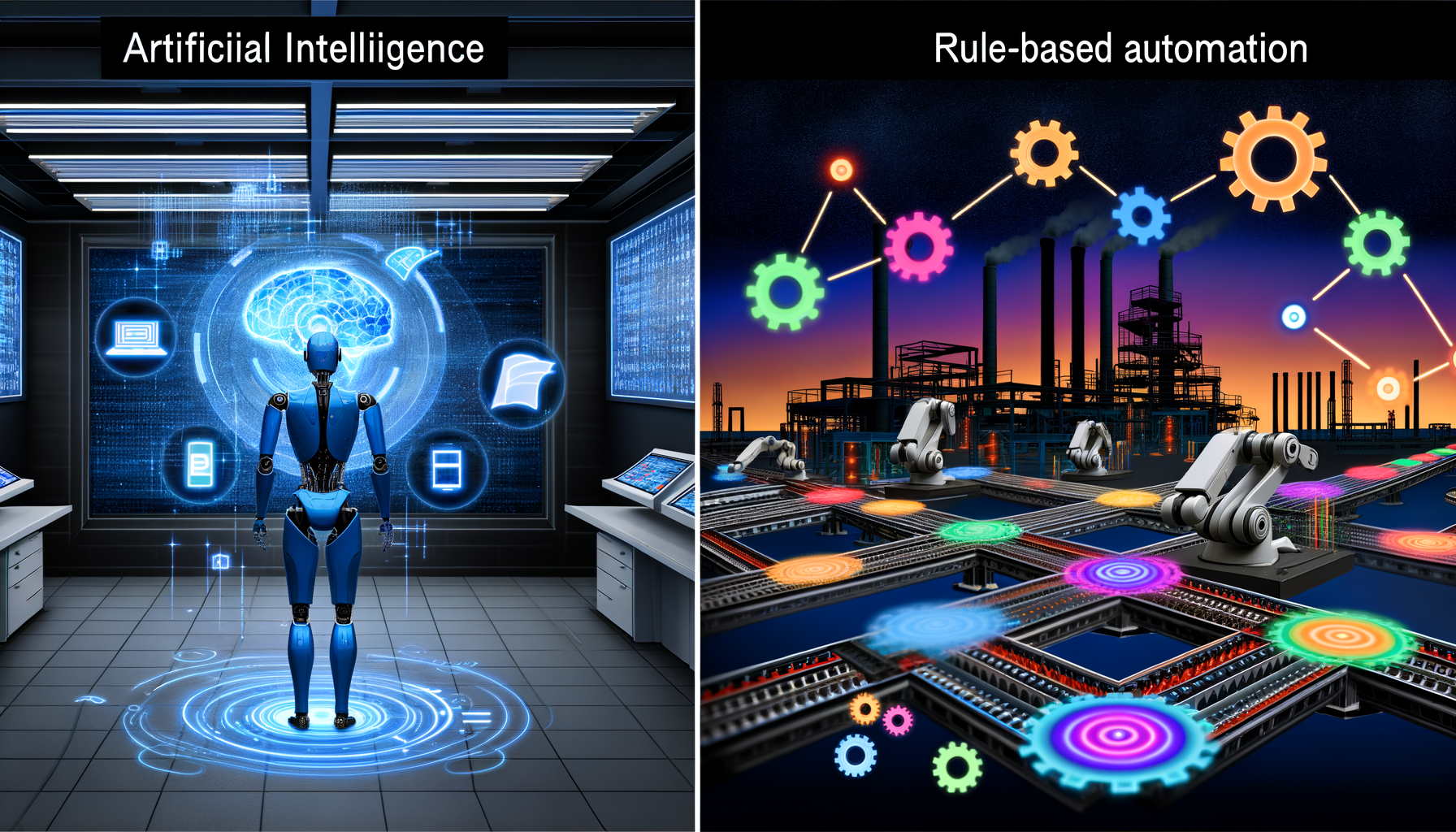Understanding the Key Differences Between AI Agents and Rule-Based Automation
AI agents have just that—AGENCY (duh, that’s why we call them ‘agents’). LLM (Large Language Model) agents take advantage of advanced algorithms to perform tasks that mimic human behavior and understanding. But what exactly separates these AI agents from traditional rule-based automation? Let’s dive deeper into the fascinating world of AI!
What Are AI Agents?
AI agents are computer programs designed to perform tasks by using artificial intelligence techniques. They can analyze data, learn from patterns, and make decisions based on that knowledge. This is quite different from traditional automation systems, which strictly follow pre-defined rules and actions. In simple terms, AI agents can adapt and respond to new information, making them more flexible and versatile.
What Is Rule-Based Automation?
On the other hand, rule-based automation consists of systems that operate based on a set of fixed rules or instructions. Think of it as a cookbook: you have a recipe that you follow step-by-step to get the same result every time. This kind of automation is great for repetitive tasks, but it lacks the ability to adapt to changes or unexpected situations. As a result, rule-based systems can struggle when faced with anything outside their programmed boundaries.
Key Differences
To truly understand the differences, let’s break it down into a few key categories:
1. Flexibility
AI agents excel in flexibility. They can learn and improve over time, meaning they can handle novel situations without needing constant human intervention. Rule-based systems, however, are rigid. If a situation deviates even slightly from what was programmed, they often fail or require a manual override.
2. Decision-Making
When it comes to decision-making, AI agents take the crown. They analyze vast amounts of information and can consider many factors before arriving at a conclusion. As the saying goes, “data is the new oil.” The more data they have, the better their decisions become. Rule-based systems, in contrast, follow specific pathways laid out in their programming and cannot adjust their decisions based on new data. They are akin to following a map without being able to alter the route.
3. Learning Capabilities
AI agents have learning capabilities instilled in their framework. They can use techniques like machine learning to identify patterns and enhance their responses over time. For example, a customer service AI can learn customer preferences based on previous interactions and improve its replies accordingly. Rule-based systems don’t learn; they do exactly what they are told, every single time, which can make them slow to adapt to changes in the environment.
4. Use Cases
The use cases for AI agents and rule-based automation are also different. AI agents shine in dynamic environments where their adaptability is crucial, like in personalized marketing or healthcare analysis. For instance, a healthcare AI can assess symptoms accurately by learning from millions of cases worldwide. On the flip side, rule-based automation works wonders in stable environments for tasks such as automatic billing or repetitive data entry where consistency is key.
Real-World Examples
Let’s take a look at real-world applications to further illustrate the distinction:
AI Agents in Action
A great example of an AI agent is IBM Watson. It has been used in multiple industries, including healthcare, where it helps doctors analyze patient data and recommend treatments based on extensive research. Watson continually learns and adapts, which provides healthcare professionals with a powerful tool to enhance patient care.
Rule-Based Automation in Action
On the other hand, consider a basic payroll system. It follows strict instructions: if it’s the 1st of the month, generate salary reports, and if it’s a holiday, skip the report for that day. This type of automation is crucial for businesses since it ensures tasks are completed accurately and consistently, but it cannot handle unexpected changes without human guidance.
The Future of AI Agents and Automation
The realm of AI agents is continually evolving. As technology advances, we can expect these intelligent systems to become even more sophisticated, blurring the lines between human and machine decision-making. Imagine a future where AI assists us in complex decisions or helps us connect ideas in a way we never thought possible!
Conclusion
In summary, understanding the differences between AI agents and rule-based automation can empower us to leverage these remarkable technologies more effectively. While rule-based automation is invaluable for specific tasks, AI agents offer the flexibility and learning capabilities that are necessary in today’s fast-paced, ever-changing world.
As we continue to explore and harness the potential of AI, remember that it’s not just about efficiency; it’s about enhancing human capabilities and creating solutions that drive us forward. So, are you ready to embrace the future of automation with AI agents?
“The use of AI in automation is like having a smart assistant who not only follows your wishes but learns from each interaction to serve you even better.” – Unknown


